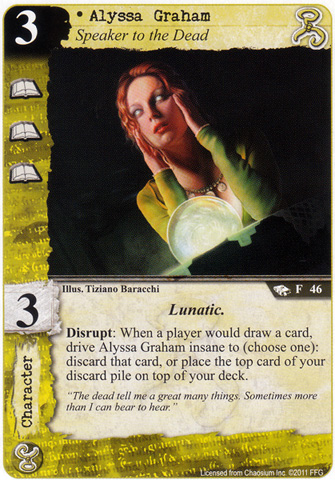Hey guys,
I'm trying to better understand the Alyssa Graham (AG) discard effect. Any opinions on this would be helpful. So… as a disrupt, during your opponents draw phase, AG could be used to discard one of the two cards drawn during the draw phase. I'm wondering (based on the wording), does this mean that if an opponent "would draw a card" and it is discarded by AG, then that opponent does not get to draw another card to replace the discarded card?
Or does it mean that the card that the opponent would have drawn is simply discarded, and then the opponent gets to draw the next one off his deck as part of his usual two card draw? I haven't seen any postings on this card mechanic and was hoping to get some clarification. What a great card for hand manipulation strategy if AG meant that the opponent really only gets to draw one of his two cards instead of both during the draw phase.
Anyways… thoughts?
